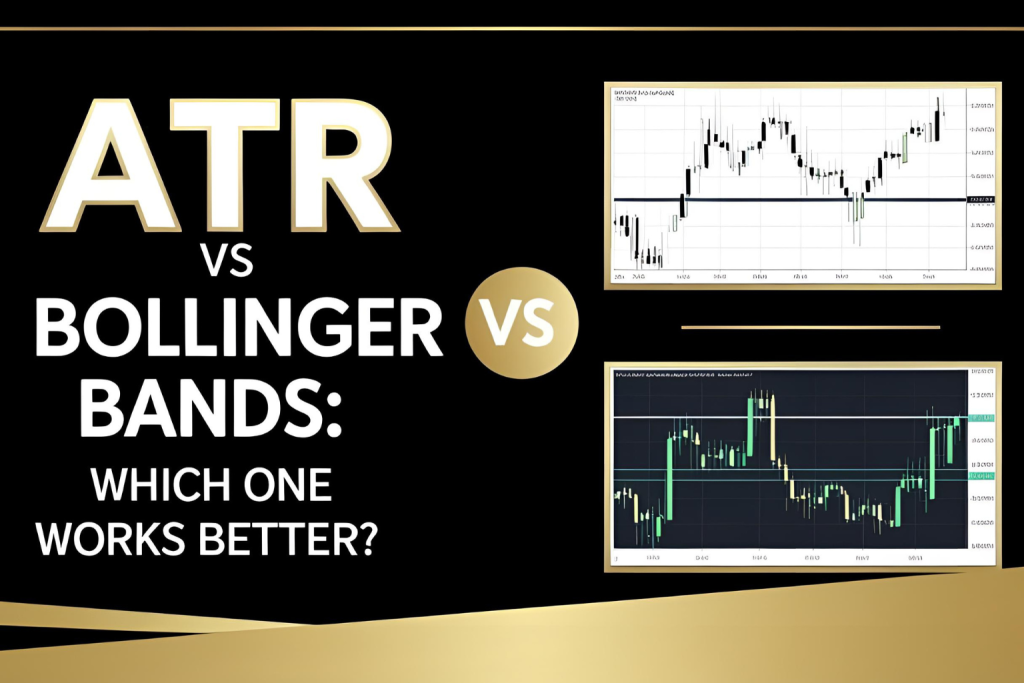When measuring market volatility, traders often use either the Average True Range (ATR) or Standard Deviation. While both are volatility indicators, they calculate price movement differently and are used in different trading strategies.
This guide will compare ATR vs Standard Deviation, helping you decide which tool fits your trading approach best.
What Is ATR?
Average True Range (ATR) measures volatility by averaging the true range of price movement over a set period (usually 14 periods). It accounts for:
- High minus Low
- Gaps between current high/low and the previous close
Key Trait: ATR focuses on the range of price movement, not its direction.
What Is Standard Deviation?
Standard Deviation is a statistical measure that shows how much price deviates from its mean (average) over a given period.
- A high standard deviation means prices are widely spread
- A low standard deviation shows prices are clustered near the mean
Key Trait: It’s commonly used in indicators like Bollinger Bands to assess price dispersion.
Key Differences: ATR vs Standard Deviation
| Feature | ATR | Standard Deviation |
|---|---|---|
| Measures | Average of true price ranges | Deviation from mean price |
| Use Case | Stop-loss, volatility filtering | Volatility bands, trend smoothing |
| Includes Gaps | Yes | No |
| Direction Sensitivity | No | No |
| Platform Support | Available on all platforms | Also built into indicators (e.g., Bollinger) |
When to Use ATR
- For placing stop-loss based on volatility
- When analyzing pure price range
- In trending or range-bound markets to measure momentum strength
When to Use Standard Deviation
- For identifying overbought/oversold conditions
- In mean reversion strategies
- To create volatility bands like Bollinger Bands
Which Is Better?
There’s no “better” option—it depends on the context:
- Use ATR if you want to measure price movement and set volatility-based stop-losses.
- Use Standard Deviation when you want to assess price extremes relative to average movement.
Some traders use both together to get a complete picture of volatility behavior.
Final Thoughts
Understanding the difference between ATR and Standard Deviation can elevate your technical analysis. While both measure volatility, they serve different functions and complement various trading strategies. The smart move? Test both and see which fits your trading style and goals.
FAQs
1. Is ATR more accurate than standard deviation?
Not necessarily—it’s just different. ATR measures range; standard deviation measures price dispersion.
2. Can I use both ATR and standard deviation together?
Yes. Some traders use ATR for stops and standard deviation for entries or reversion trades.
3. Is standard deviation better for Bollinger Bands?
Yes. Bollinger Bands are built using standard deviation, not ATR.
4. Does ATR reflect sudden news volatility?
Yes, because it includes price gaps. Standard deviation does not.
5. Which is easier for beginners?
ATR is generally simpler to understand and apply in real-time trades.


